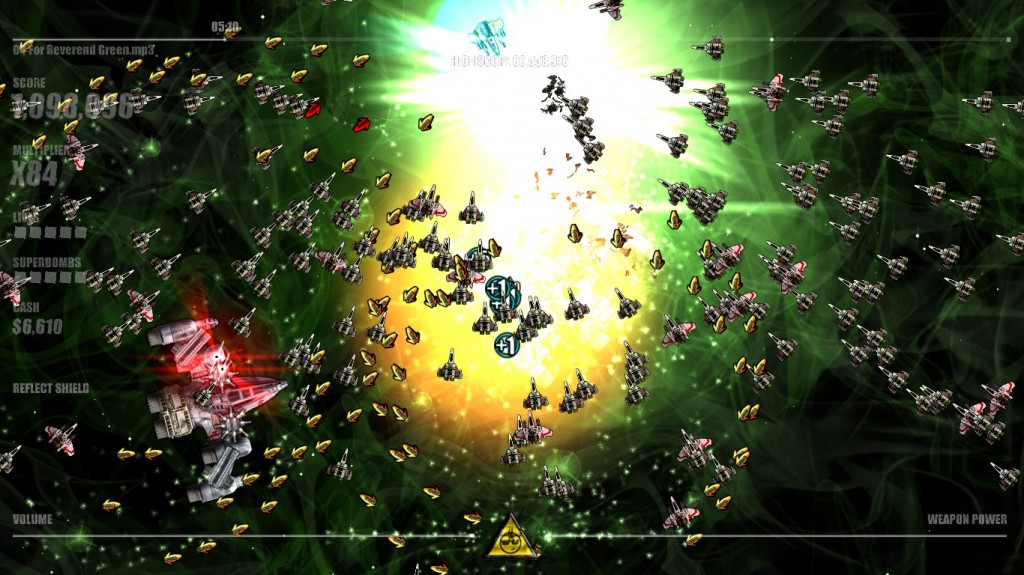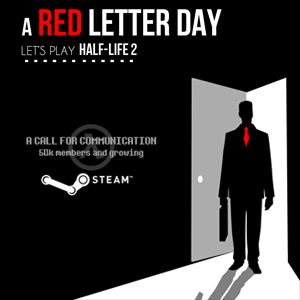“No, really, I get it. I’ve played Geometry Wars. I know how to turn music on in the background too.”
My roommate’s derisive tone was so caustic that the sheer memory of it had almost tricked my auditory system into believing that I was hearing his words in the present.
For a brief second I hated him all over again. How could that son of a bitch have said something like that about my digital lover Beat Hazard? Had he forgotten the levels shaped by the player’s own music? Could he possibly ignore the mesmerizing glow of the pulsing astral flavored psychedelic backgrounds?
The logical end point had become all too clear.
Zack was quite obviously a demon, lacking a soul and had to be destroyed. At any cost. However, to his credit, he was smart and quelled my righteous rage with alcohol and Gushers fruit snacks.
While I swilled Woodchuck Hard Cider and was treated to mini-neutron bombs of corn-starch based simulated fruit flavors, Zack pointed out the fact that Beat Hazard did have a few shortcomings. I now present these to you, dear reader, only for fairness sake rather than actual agreement as I am hopelessly blinded by my own love for the game
Zack lists the twin stick shooter’s shortcomings as such:
- Geometry Wars exists. As do iPods. Just saying.
- There are only three enemies. The smaller twin versions of the boss ships don’t count. Deal with it.
- The music has little effect on enemy patterns, but hugely alters the player’s ship’s rate of fire. This renders some music genres and entire tempos of music nearly unplayable at worst and not worth it as far as the score to difficulty ratio is concerned.
Given the rather detailed memory stream going down in my head, I’m sure I stood in the kitchen for a long time before I began to cackle manically over Zack’s shoulder as I watched him enter his credit card info to purchase the Beat Hazard complete pack on Steam.
What set him over the edge? Beat Hazard Ultra. Also known as the single best piece of DLC ever, and if it’s not known as that, it really should be.
Rarely does a piece of $5 dollar DLC alter a game to its core as to make it almost unrecognizable in comparison to the original game, but BHU does just that.
To put it into perspective, my entire July 4th weekend was not spent trying to blow myself up with smaller, cheaper versions of TNT. Oh no, my weekend was spent in front of the computer, with my profanity laden screams making a frail effort to drown out my neighbors attempts to audition as the sound guys for Blackhawk Down II: Somali Harder. The former 368th best Beat Hazard player in the world was reduced to grinding his way back through normal, hardcore and insane difficulties in an effort to master the 7 new enemies (fuck you snake guys, just because you have a big and little version doesn’t make you two separate things) and collect money to unlock all of the game changing perks.
Yes, BHU has perks. Just like every game thanks to everyone snatching up copies like the gutted innards of a renegade Cheetos bag at a fat camp. But I can live with the perks in this instance, because what what Beat Hazard needed to keep players going was an excuse to play the game for something other than just points and enjoying music in game form.
I wish there was a list of personal addresses for the developers of all the crappy indie music games I’ve bought. Because I have a whole stack of invoices I have to send out to get some money back. Special note to indie game designers: just because your game has a music player built into it, doesn’t make it a music game.
Vanilla Beat Hazard seemed to toe the line between a game with a music player and a music game about as aggressively as an 8 year old on a long car ride getting all up in his sister’s personal space. But now, Cold Beam Games (they made this thing!) seems to have figured it out, to the point that finally, the game reflects the music in more ways that just the rate of fire. Enemy patterns now seem to match the tempo and dynamics of the music, and the variety of enemies gives the game the opportunity to have enemy attack types match the music as well. So expect to see a lot of mine laying enemies and space plasma shit coming at you in slow-mo during a slow stretches and waves of fast nimble ships popping in to say what’s up whenever the song picks back up.
That’s all well and good, but the real reason I was gloating hysterically as Zack purchased the game, was that I have yet another thing to hang over his head and rub his face in on a moment to moment basis. The leader boards. The goddamn leader boards.
Beat Hazard keeps track of every point you score in every mode and keeps a running tally, making every single play session or failed song attempt or stunning victory actually count for something. This works to its advantage in that no failure every really feels like a failure at all. Making it all the harder to say no to just one more game
More than that, it turns the leader boards into the ultimate e-peen measuring contest. The boards become a place where a talented player and a dedicated player can stand shoulder to shoulder… or e-peen to e-peen… whatever, and high five over how amazing they are until they shatter every bone in their hand. Oh and there are a bunch of other metrics with their own leader boards. But who cares?
If BHU has any glaring problem at all, the only one I can see is that the initial screen giving you the heads up that the game hands out seizures like date rapes at a frat house, does not also advise that you could start burning through underwear at a shocking rate.
You could.
That’s for real.
Beat Hazard Wallpaper, beat hazard, beat hazard review![Beat Hazard review “No, really, I get it. I’ve played Geometry Wars. I know how to turn music on in the background too.” My roommate’s derisive tone was so caustic that the sheer […]](http://steamaddicts.com/wp-content/uploads/beat_hazard-cover-616x308.jpg)

